Updated 8/15/24. Every August 17, I get to celebrate both my birthday and the anniversary of my company. This year, I celebrated my 55th trip around the sun and my 28th year in business! I couldn’t be happier.
I’ve learned so much over the years—about business, beauty, and everything in between.
On Renée Rouleau Skin Care’s 25th anniversary, I focused on sharing all of the most important business lessons I’ve learned. This year, though, I thought it would be fun to switch gears and share the biggest skincare lessons I’ve learned. After all, I’ve been in this industry for over 30 years, and throughout that time, I’ve helped hundreds and hundreds of clients with their skin. I’ve also been caring for my own skin! Gotta practice what I preach, even though I haven’t always gotten it right.
Here are my seven biggest skincare regrets. May you learn from my mistakes!
1. Picking at Cystic Blemishes
I never really experienced many breakouts on my face until I was in my early 20s (although I used to have bad back acne during my teen years). Around this time, I suddenly started getting cystic breakouts on my chin and along my jawline (as so many women do). I spent the next 10 years or so dealing with these blemishes. Luckily, I learned a lot about how to manage them.
One lesson I learned the hard way was that you should never, under any circumstances, pick at cystic breakouts. You see, not all blemishes are the same. Unlike a papule or a pustule (think a typical red pimple that eventually forms a whitehead), cysts are not meant to come to a head. Instead, they’re eventually reabsorbed by the body. They’re hard and lumpy and can be very painful, so I understand the urge to pick at them, but this will only exacerbate inflammation and make them last longer.
Unfortunately, I didn’t always follow my own advice back in the day. Somehow I justified my picking by saying, “my hands are licensed, I know what I’m doing!” I had a bit of a skin-picking obsession and would go to town on my cystic breakouts, which led to unsightly scabs and more than one deep, stubborn scar. Now that I’m in my 50s, I don’t get these breakouts that often anymore. When I do, though, I faithfully use Anti Bump Solution (a true miracle, which is why it’s our best-selling product!) as a spot treatment until they go back down. Anti Bump calms inflamed breakouts without drying them out, which is exactly what you need. I might also use a high-frequency device every now and again!
After years of dealing with cystic breakouts myself and then treating my clients for them, I came up with these eight tips to prevent chin and jawline breakouts.
2. Not Understanding My True Skin Type
Speaking of cystic breakouts, did you know people who deal with acne in their younger years often end up using the wrong products for their skin type later on.
Before I knew better, I was one of these people. When I had cystic breakouts on my chin and jawline, I very much took the “scorched earth” approach to treating them. I used a lot of drying, acne-focused products like harsh foaming cleansers. I’d use these not only on blemish-prone areas but on my entire face. My skin really suffered as a result. It became dehydrated, which exacerbated any fine lines I had and made my skin look dull and anything but glowy. Still, I was so fixated on what was bothering me most (my blemishes) that I didn’t consider my skin’s other needs.
This experience was part of what led me to create my 9 Skin Types. The goal with these was to bring some nuance to individual skincare routines. I came to understand that skin is more complicated than the traditional dry, normal, and oily skin types. What’s more, most of us want to address multiple skin concerns at once. I myself was a Skin Type 2, which meant I was using a routine to address occasional breakouts while still supporting healthy skin aging. As I’ve entered my 50s and gone through some hormonal shifts, I’ve transitioned to a Skin Type 6.
Learn the five mistakes people make when determining their skin type.
3. Not Treating My Neck and Chest as an Extension of My Face
With daily Zoom calls becoming the norm and terms like “tech neck” taking center stage, people are more aware of the importance of treating the neck area than they used to be.
There’s still one mistake I see so often though, and it’s one I’m guilty of making in my early years. When I was finished applying sunscreen to my face, I would take whatever was left on my hands and drag it down onto my neck. As we now know, sunscreen is only effective if you apply it generously, so my neck was definitely NOT protected well enough all those years. (I actually suspect this might be part of the reason I developed poikiloderma on my neck in my 40s.)
These days, I diligently apply a generous amount of sunscreen to my neck and chest. Your face requires a good quarter-sized dollop of sunscreen for proper protection, and your décolleté requires the same. (Check out my guide to sunscreen application to make sure you’re getting the right amount!)
On that note, I also regret not being better about carrying other skincare products, like serums, down onto my neck and chest. Because the skin on my neck gets red easily, I mistakenly assumed it was too sensitive to handle most products so I neglected it. It’s true that this area is sensitive and should be treated with care, but it was really just about finding the right products. Now, I use a gentle retinol serum a few nights a week along with my Intensive Firming Neck Creme. To exfoliate, I love a gentle physical scrub. I’ve seen a lot of improvement with this routine in getting the texture of my neck to look much smoother!
Read the eight things you should be doing for the skin on your neck and chest.
4. Not Wearing Foundation Makeup Every Day
When people hear me say this, they usually think I’ve misspoken, but I really regret NOT wearing foundation every day when I was younger.
I understand why this confuses people so let me explain. There’s a misconception that wearing makeup doesn’t allow your skin to “breathe.” However, the skin doesn’t have a respiratory system, so there’s no need to worry about that. While I fully believe everyone should feel comfortable going bare-faced should they choose, the fact is that foundation makeup can protect your skin. Yes, really!
Most foundation makeup gets its tint from iron oxides, the ingredient used as a UV blocker in physical sunscreens. This means they’re actually providing an extra layer of sun protection. Even if these products aren’t labeled with an SPF number, know they’re offering some protection.
When I moved from Boston to Texas back in the late 90s, something that really stood out to me was the fact that a lot of the women in their 50s and beyond had really smooth and beautiful skin. After some observation, I realized these women were wearing base foundation makeup 365 days a year, rain or shine, and concluded the sun protection this provided was a huge contributing factor.
I do want to note that makeup should never be relied on as your sole form of sun protection. It’s still important to wear a certified broad-spectrum sunscreen product every day to protect against skin cancer and premature skin aging. Just think of your makeup as an added insurance policy!
At the end of the day, there’s no better way to thoroughly remove long-wear foundation than with Better Than Balm (and with no double cleanse!).
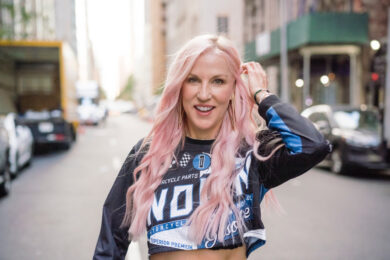
5. Getting Botox in My Jaw Muscles for Clenching
Years ago, I got Botox in my masseter (jaw) muscles. Like many people, I grind my teeth, and over time this had started to make my face look a little more square thanks to the strengthening of my jaw muscles. It was recommended to me that I try Botox to relax these muscles, and this was also supposed to give my face more of a heart shape. I decided to give it a go, but unfortunately, I wasn’t a fan of the result.
Because I had good volume and lots of fat cells in my face (my face has always been naturally full), my skin started to fall a little bit now that it was no longer “hung up” on those jaw muscles. They had been acting as a sort of scaffolding for my skin. Instead of the heart shape I was going for, the lower half of my face ended up looking a little bit droopy. The problem eventually corrected itself, but I had to wait patiently for about four months for the Botox to wear off.
I will say, just because this didn’t work out for me doesn’t mean it won’t work for anyone. Some people may have great results. It just depends on your unique facial anatomy. Because of this, it’s important to see an experienced doctor who can predict how treating one area might naturally lead to changes in other features. I still get Botox regularly to soften the lines around my eyes, and I love the results in that area.
Learn which three facial features that can give you a younger appearance.
6. Not Starting Retinol Sooner
While I was a pretty early adopter of wearing daily sunscreen, it took me longer than I would’ve liked to hop on the retinol/retinoid bandwagon.
When I first tried using a retinoid in my mid-30s, it hadn’t really been around that long. The only form available was a prescription called Retin-A (also known as Tretinoin), and it was typically used in fairly high concentrations compared to what’s offered today. Back then, a prescription retinoid was also seen as something you started using once you noticed signs of skin aging. It wasn’t really marketed as a preventative option the way it is now.
I tried so hard to incorporate Retin-A into my routine, but no matter what I did I would develop eczema on my eyelids (even if I didn’t put the product anywhere near my eyes). Eventually, I just gave up. It wasn’t until years later when I developed my own retinol product that I could use it consistently.
In hindsight, I wish I had understood the retinization process better and had known how to get through that initial stage. I’m actually able to use a prescription retinoid one or two nights a week now, and I think it’s because I have a much better understanding of how to care for my skin’s moisture barrier. I also learned how to incorporate it into my routine more slowly, and I understand the value of using a lower strength consistently.
If you’re struggling to incorporate retinoids into your routine, check out this handy beginner’s guide.
7. Giving Treatments But Never Receiving Them
I got a facial a few months back, and it was the first one I’d had in years. I’ve been a working esthetician since I was 21, and in all that time I can count on one hand the number of treatments I’ve actually gotten myself.
It’s not so much that I think the quality of my skin has suffered as a result, but I wish I’d taken more time for myself. I was very focused on my career and taking care of my clients and employees, and while this brought me a lot of happiness, I regret not taking a little more time for myself (all work, no play was my life for years). If I could talk to my younger self, I’d tell her to slow down every once in a while, take it all in, and enjoy the ride (as well as a good pampering now and again!). I did just get another facial here in Austin a few weeks ago, and I really enjoyed being the recipient of a service in the profession I love so much!
Next up, I talk about what brings me happiness and how I strive to incorporate this into my everyday life.
Celebrity Esthetician & Skincare Expert
As an esthetician trained in cosmetic chemistry, Renée Rouleau has spent 35 years researching skin, educating her audience, and building an award-winning line of products. Her hands-on experience as an esthetician and trusted skin care expert has created a real-world solution — products that are formulated for nine different types of skin so your face will get exactly what it needs to look and feel its best. Trusted by celebrities, editors, bloggers, and skincare obsessives around the globe, her vast real-world knowledge and constant research are why Marie Claire calls her “the most passionate skin practitioner we know.”
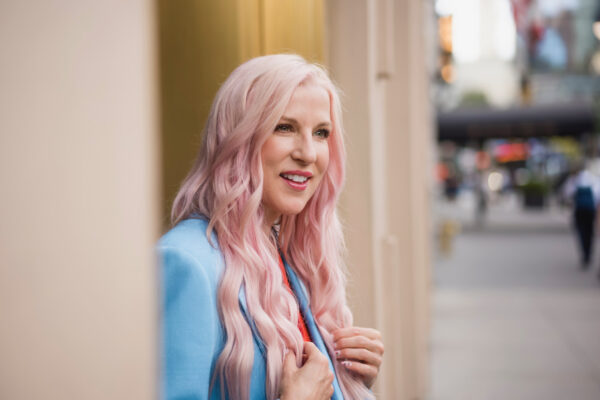
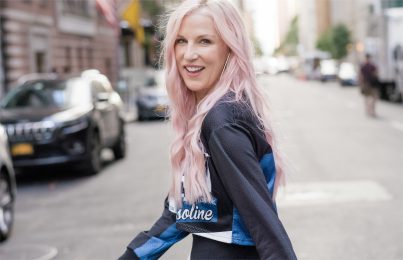
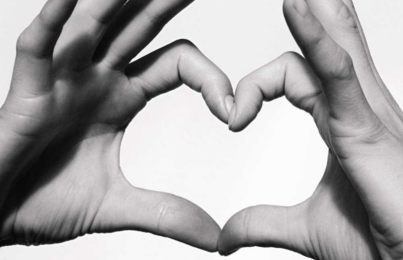
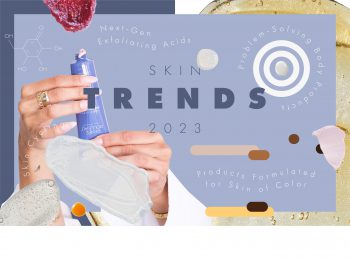
Comments:
This is helpful
Posted By: Ciro Studios |
I just wanted to say thank you for sharing this valuable information. Your post was really helpful and informative. I learned a lot!
Posted By: som extracts |
This is fabulous. I relate myself , earlier, I agree.
Learned that this past few years. We have to Stop and make it happen.
Posted By: Erma Morris |
Nice post
Posted By: Irich Photography |
Good informative post
Posted By: Irich Photography |